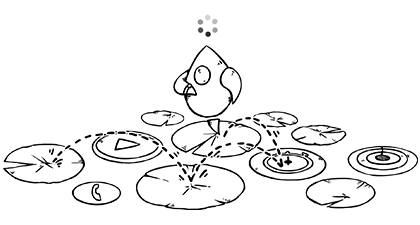The Apple Watch is almost a year old now. Thousands of apps have been developed for it. What have we learnt so far? What makes a good user experience for a watch app? What works, and what doesn’t? Which apps should you be building for the watch?
Some Apple Watch experiences
- I’m in the middle of cooking. I notice I’m running out of something, raise my wrist and speak. “Hey Siri, add smoked paprika to my groceries list”. The item is added to a shared reminders list, I forget about it and move on. Good 1
- Still cooking, I need to time something. I raise my wrist and speak, “Hey Siri, timer for 10 minutes”. A timer starts, I forget about it and move on. Good
- My phone is in my armband, I’m ready to go out for a run. I open the RunKeeper app on my watch, hit go, and start running. Good
- My wrist buzzes, it’s an email I don’t need to do anything about. I scroll through the text and hit delete on the notification, keeping me at inbox zero. Good
- My wrist buzzes, a friend has mentioned me in a tweet. Using the international code for “OK, I enjoyed it but this conversation is probably done now”, I like the tweet from the Twitterrific notification. Good
- I feel the overwhelming yet utterly irrational desire, perhaps for the purposes of research, to check my recent mentions, likes and new followers on Twitter, but for some reason I also want to do this on a tiny screen strapped to my wrist. I open the Twitterrific watch app and wait for several seconds for it to launch. Then several more seconds for it to fetch data. I start to feel faintly ridiculous, staring at my watch with a slight frown, like I’ve forgotten how to tell the time. The screen goes black because nothing has happened for so long. I flick my wrist up and down a few times to no avail, before remembering I can also tap the screen. I then look at a list of mostly truncated usernames and tweets, whilst trying to remember what I came here for in the first place. I tap one of the items, there’s another delay, and I get an error saying “WatchConnectivity on the paired device is not reachable”. Then that goes away and the item turns up. Oh, a reply button! I tap that, start to dictate a reply. Some words are garbled. I can’t tell how to edit or change the incorrect words. I start to question many of my life choices. I hit the digital crown to go back to the watch face, sigh, and pull my phone out of my pocket, which has unlocked via touch ID before I’ve even lifted it up, open Twitterrific there and do whatever it was I was going to. Bad
The above is not intended to unfairly single out Twitterrific, one of my favourite iOS apps. Third-party watch apps all suffer from slow loading and slow or unreliable communication with the phone. Many of these limitations are inherent in the current generation of hardware and software. But, rather than wave our hands and say that third-party apps might suck now, but it’s all Apple’s fault and it’ll be great on Watch 2, it’s worth taking a look at what our watch apps should be doing and what we, as app creators, should be thinking about.
The watch is not just a small-screened iPhone, in the same way that an iPhone is not just a small-screened Mac. The usage patterns, interactions and user intentions are completely different. No matter how great the watch hardware becomes, users are never going to want to interact with it for more than a few seconds. Try this “fun” experiment:
Lift your arm up and look at your watch, or the part of your wrist where a watch would be, close enough to read the text on the screen.
Now hold your arm there.
Keep holding.
Bonus points if you’re doing this where other people can see you.
After a very short time it begins to feel socially or physically awkward. This is not a problem with the watch. It’s a design constraint to be embraced; the point of this device is to allow us to get our stupid primate faces away from staring at screens all day and spend more time doing something, anything else. Watch apps are not there for killing time while you’re waiting in the queue at the post office.
You can divide watch interactions into three streams 2:
I’m being told something
This is the domain of Dynamic Notifications, the best thing on watchOS. Unlike iOS, where the user is shown whatever text is sent with the notification and nothing else, dynamic notifications allow rich content and customisation. The watch shines as a notification delivery system, and it would be excellent for this customisation and power to come to iOS notifications as well.
The vast majority of my watch interactions are done via reading notifications and sometimes hitting one of the action buttons. It is not possible to have a dynamic notification UI without also providing a watch app. I feel that this restriction, and fears of watch apps being rejected for offering no “real” functionality, lies behind several of the somewhat lacklustre or pointless-feeling watch apps on the store today. I’m sure there are plenty of cases where dynamic notifications make sense, but an app does not.
The best watch app is the one you never have to launch. If you have notifications, put the work in to make them so good, the user never bothers with the app.
I want to know something
To make delivery of information valuable on the watch, the information must be compact, up-to-date, and quickly accessible. Your options as a developer are:
- Complication: If the user is using your app’s complication, congratulations! You’ve made it into the top three to five things they want to see every time they look at their watch! Make it count!
- Glance: Had you forgotten about glances? That’s understandable. Glances are a desert, and a waste of a valuable edge swipe. They don’t get updated until they’re being viewed, and there’s no system indication if the data is fresh, in the process of being refreshed, or stale. By the time you’ve swiped up to see glances, tried to remember whereabouts in the unlabelled page controller your glance is, swiped left and right to find it, then stared at it for a while to see if it updates, you’ve already spent too much time on the thing. Once you do have information there, it’s non-interactive, meaning that there’s very little incentive to go to a glance instead of directly to the app. Swiping up from the bottom could more usefully show a screenful of favourite apps, to allow for faster launching.
- App: If your app is for the display of information, give the information up immediately. Don’t have menus or display options or navigation. The user has already been through enough, pressing the crown, finding your tiny lilypad in that ridiculous duckpond 3, and tapping it. Pick the relevant subset of your phone app’s data and present it in the first screen. For example, my banking app shows my balance. I don’t want to make payments, view transactions, find nearby cash points or any of the other stuff the phone app lets me do. That’s what the phone app is for.
I want to do something
This is the trickiest area for the watch right now. You’re operating against tight constraints of space, time, input options and resources. Bump up against any one of these and you’re delivering a poor experience. Your competition, remember, is waiting in the user’s pocket or bag and can be out and active before they’ve finished looking at the loading spinner (though to be fair, the loading spinner only shows up if the app hasn’t been launched recently). This is where fitness apps have the edge — the phone may be in an armband or locker, and much harder to access.
There’s not much you can do about the launch time, but you can make sure that the user can do what they came to do as soon and as simply as possible. Focus on the most common use case, and defer to the phone app for the others.
Omnifocus is a great example of this category of app. The opening screen is a menu of sorts, yes (though it also displays information straight away) but then you can get a specific list of things to be ticked off, which is very useful when out shopping or doing a checklist-style task.
Do you want to build a watch app?
Given the above, it seems like these are the questions you should ask before developing a watch app:
- Does your app deliver useful information via notifications that would be enhanced by dynamic notifications and notification actions? Go for it. Focus on the notifications.
- Does your app deal with frequently updated, important information that can be represented in a very compact form? Go for it. Focus on the complication.
- Does your app lend itself to quick and simple interactions with useful outcomes? Go for it. Focus on the app itself.
- Does your app not belong in any of those categories? That’s also fine. Focus on the making the iOS app great. Your users will thank you.
A year in and the watch is still a nascent platform. There are problems that will disappear as the hardware and software evolves, and problems we can address right now by making sure the work we’re doing for the watch is relevant and appropriate. Watch this space 4.
-
OK, good about 80% of the time. Sometimes Siri doesn’t want to play. ↩
-
David Smith has an interesting additional category, apps that are watch-exclusive because they depend on sensors only available on that device. ↩
-
Seriously, what is that? You need the app installed on your watch to get the good notifications, but you might only want to use a couple of them as apps. The duckpond might look good in a demo, but it’s horrible to use. ↩
-
Come on, I’m allowed one pun per article, it’s in my contract. ↩


